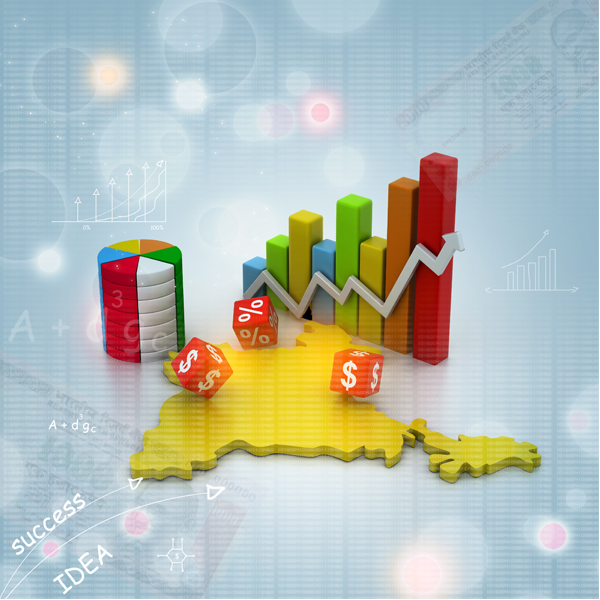This capital flight could also impact currency markets and rupee might lose some of its value like it did a couple of years ago.
- Representational illustration File Photo dna Research & Archives

The much-awaited statement from US federal Reserve is here and the emerging markets globally are rejoicing. Dollar was weakened against global currencies (Rupee opened 34 paise stronger) and thestock markets are elated (BSE and NSEjumped over 1% on Thursday morning).
The press release of US Federal Reserve stated, "The Committee is maintaining its existing policy of reinvesting principal payments from its holdings of agency debt and agency mortgage-backed securities in agency mortgage-backed securities and of rolling over maturing Treasury securities at auction." What this effectively means is that the Fed is not raising rates at the moment but is not averse to the idea in near future.
It said, "When the Committee decides to begin to remove policy accommodation, it will take a balanced approach consistent with its longer-run goals of maximum employment and inflation of 2%."
What elated the stock markets globally is Fed's statement that it might still keep rates unchanged even after employment and inflation are in comfort zones. The statement read, "The Committee currently anticipates that, even after employment and inflation are near mandate-consistent levels, economic conditions may, for some time, warrant keeping the target federal funds rate below levels the Committee views as normal in the longer run."
But what came as a music to ears of stock markets was the announcement that a rate hike in April meeting also remains unlikely.
Global stock markets, especially emerging markets (incluing India), were expecting a huge sell-off from foreign investors if the US Fed signalled rate hike. However, as its possibility is ruled at the moment, the markets cheered the move.
The last time Fed raised rates was in 2006.
What this means for India?
Raghuram Rajan, governor, Reserve Bank of India:
Even though Indian stock markets remain in a precarious situation as foreign money dictates the direction of the market, Raghuram Rajan, governor, Reserve Bank of India (RBI) remained confident.
Even though he did not rule out the possibility of volatility in the Indian stock markets if US indeed raised rates, he assured that the country is fully prepared to deal with any situation arising out of US Fed's statement.
Couple of years ago, when the US Fed signalled tapering off of its quantitive easing program, dollars flew from the stock markets sending the markets in a tizzy and eroding rupee's value against the dollar.
However, India's current account deficit (CAD) at that time was over 4% and forex reserves to tackle the capital flight were low.
This time around, India's CAD is firmly in control and is expected to be 1.2% of GDP in the current fiscal and RBI has built up record dollar reserves of $337.8 billion.
Christine Lagarde, chief, International Monetary Fund (IMF):
Lagarde, who was in India on a two-day tour earlier this week said that India is a bright spot in the gloomy global economy. She said that emerging markets including India must prepare itself to risks arising out of the US Fed rate hike.
She warned that US might begin to unwind its monetary stimulus later this year and it might cause volatility in the stock markets giving rise to stability issues in the emerging market economies.
She added that the central banks must intervene with foreign exchange interventions and supporting domestic economy with liquidity push.
Lagarde said that Indian companies with high leverage, especially in dollar loans, are likely to get affected when US Fed begins to hike rates.
How will US rate hike affect India:
US rate hike would mean that foreign money would leave stock markets in India and go back home for safer avenues. This would bring volatility in the Indian markets.
This capital flight could also impact currency markets and rupee might lose some of its value like it did a couple of years ago.
Rupee strenghtened today morning against dollar simply because US Fed ruled out rate hike for April at this weakened dollar. An opposite effect will happen when rate hike actually takes place and money flies back to US from Indian markets.
Moreoever, Indian companies don't have proper hedging strategies in place as they expect rupee dollar to be in 62-63 zone. Any fall in rupee is likely to affect their balance-sheets on the back of currency losses.
India is safe from the volatility at the moment but any rate hike by the US Fed could cause a ripple affect beginning from the stock markets to impacting the profits of companies because of fall in rupee's value against the dollar.
India's external debt, which is ballooning at the moment, would increase further and falling exports would make the matters worse.
India's exports during April-February period stood at $284 billion as against imports of $411 billion. Export growth, earning precious dollars, continues to be muted and is only helped by a lower import bill becaue of lower oil prices.
Minister of State for Commerce and Industry Nirmala Sitharaman said that exports are declining because of muted global demand, stagnation and deflation problems in European Union.
http://www.dnaindia.com/money/report-us-fed-india-safe-but-for-how-long-2070132



